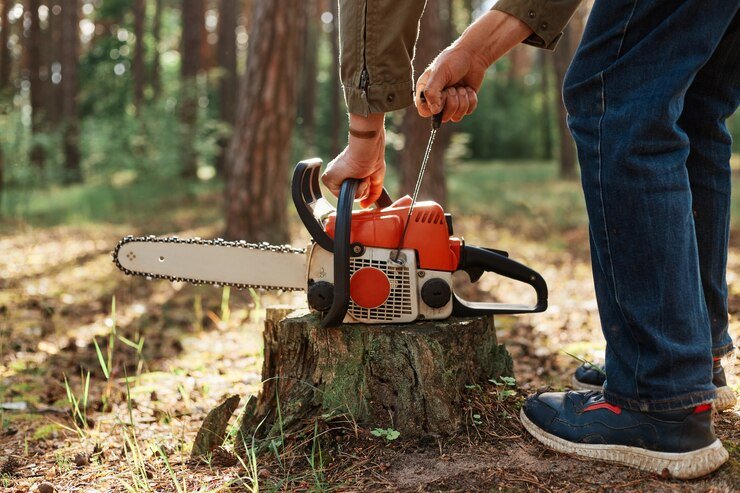Have you ever thought about any quick and safe methods to do the forestry job? Whether your work involves logging, land clearance, or tree upkeep, machinery selection is crucial. Appropriate tools guarantee sustainable forest management, lower hand labor, and increased production. Better results will come from knowing the several tools at hand for forestry and matching them to your particular requirements.
Understanding Essential Forestry Equipment
Forestry Equipment is essential for safety while working in forestry. Among the most often used instruments are chainsaws, perfect for cutting logs into reasonable lengths, clipping branches, and felling trees. Advanced models improve performance and user protection by including safety brakes, automated oiling, and anti-vibration systems.
Another essential tool is a harvester. In one running action, these strong machines can chop, debranch, and divide trees into logs. By lowering hand-cutting time and raising accuracy, they greatly boost efficiency in large-scale forestry operations.
Although they are made specially to cut several trees at once and resemble harvesters, feller bunchers are best for high-volume activities. To guarantee faster harvesting, they rapidly grab and cut trees using a strong cutting head.
Moving logs from the cutting site to processing or storage facilities depends on skids and forwarders. While forwarders lift logs and move them more deliberately, skids drag logs along the ground, minimizing soil disturbance.
Assessing Your Forestry Needs
Analyzing your operational needs is essential before buying forestry tools. The size of your forestry project will decide the kind of equipment required. Handheld instruments like chainsaws and brush cutters could be plenty for small-scale tasks.
To increase efficiency and save labor costs, large-scale logging projects call for mechanical tools such as skidders and harvesters. Equipment choice also depends much on the topography of the forested area. While hilly or uneven environments call for tracked machinery for improved stability and mobility, flat terrain lets wheeled vehicles be used.
Another crucial consideration is the kind of trees you are handling. While softwood species like pine and fir can be handled with less equipment, hardwood trees like oak and maple demand sturdy cutting instruments with sharp blades. Knowing the typical tree size at your forestry site will enable you to select the correct chainsaw or harvester-cutting capability.
Prioritizing Safety and Maintenance
When working in the forest, safety is very important. In a forest, using heavy machinery carries hazards. Hence, appropriate training and safety precautions are absolutely vital. Training will help all operators to become familiar with the operations and safety aspects of the equipment. Well-kept machines last longer and perform better.
Forest workers try to follow the personal safety equipment (PPE) to reduce their chance of injury. For this, they usually wear high-visibility clothes for more visibility in dense forests, and helmets with face covers to protect against falling objects. Gloves with anti-vibration padding aid to lessen fatigue when using hand tools; steel-toed boots shield your feet from heavy logs and machinery.
Considering Environmental Impact
Practices of sustainable forestry need great thought on the environmental effects of machinery. Modern tools for forestry are meant to cause the least harm to the ecology. Wide tire or track low-impact logging equipment properly distributes weight, therefore preventing soil compaction and maintaining the condition of the forest floor. To reduce unnecessary tree damage and support selective logging, some sophisticated harvesters apply precision cutting technologies.
Another vital issue is the handling of forestry waste. Forestry Equipment helps you in this, by using chippers, and mulchers that can recycle organic material rather than leaving branches and wood waste to break down organically. Using biomass energy generation, wood chips can be recycled, therefore fostering green energy sources and lowering waste. To reduce pollution, eco-friendly forestry practices also call for employing bio-degradable hydraulic fluids and fuels with smaller emissions.

